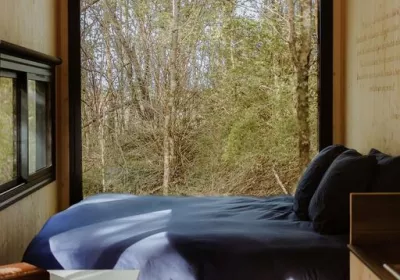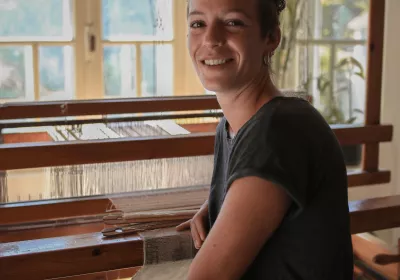
Parenthèse
45340 - CHAMBON-LA-FORETMore than an unusual accommodation, Parenthèse offers you an experience of introspection. From a few days getaway to a creative ...
On the edge of the Beauce and Gâtinais regions, the village stretches along the left bank of the Rimarde, a small green river which, at its confluence with the Œuf a little downstream, gives rise to the Essonne. It is to the Celtic name of this river, Avara, that Yèvre-la-Ville owes its name, the oldest form of which was Evera Vico, "the village on the banks of the Avara". This charming rural community is home to a magnificent Romanesque church dedicated to St Brigid, the patron saint of Ireland. It is particularly remarkable for its chevet, with its cul-de-four apse flanked by two apsidioles, dating from the end of the 11th and beginning of the 12th centuries, as well as the choir surmounted by the Romanesque bell tower. It was redesigned in the 19th century and has a neo-Gothic entrance
On the edge of the Beauce and Gâtinais regions, the village stretches along the left bank of the Rimarde, a small green river which, at its confluence with the Œuf a little downstream, gives rise to the Essonne. It is to the Celtic name of this river, Avara, that Yèvre-la-Ville owes its name, the oldest form of which was Evera Vico, "the village on the banks of the Avara". This charming rural community is home to a magnificent Romanesque church dedicated to St Brigid, the patron saint of Ireland. It is particularly remarkable for its chevet, with its cul-de-four apse flanked by two apsidioles, dating from the end of the 11th and beginning of the 12th centuries, as well as the choir surmounted by the Romanesque bell tower. It was redesigned in the 19th century and has a neo-Gothic entrance
On the edge of the Beauce and Gâtinais regions, the village stretches along the left bank of the Rimarde, a small green river which, at its confluence with the Œuf a little downstream, gives rise to the Essonne. It is to the Celtic name of this river, Avara, that Yèvre-la-Ville owes its name, the oldest form of which was Evera Vico, "the village on the banks of the Avara". This charming rural community is home to a magnificent Romanesque church dedicated to St Brigid, the patron saint of Ireland. It is particularly remarkable for its chevet, with its cul-de-four apse flanked by two apsidioles, dating from the end of the 11th and beginning of the 12th centuries, as well as the choir surmounted by the Romanesque bell tower. It was redesigned in the 19th century and has a neo-Gothic entrance
On the edge of the Beauce and Gâtinais regions, the village stretches along the left bank of the Rimarde, a small green river which, at its confluence with the Œuf a little downstream, gives rise to the Essonne. It is to the Celtic name of this river, Avara, that Yèvre-la-Ville owes its name, the oldest form of which was Evera Vico, "the village on the banks of the Avara". This charming rural community is home to a magnificent Romanesque church dedicated to St Brigid, the patron saint of Ireland. It is particularly remarkable for its chevet, with its cul-de-four apse flanked by two apsidioles, dating from the end of the 11th and beginning of the 12th centuries, as well as the choir surmounted by the Romanesque bell tower. It was redesigned in the 19th century and has a neo-Gothic entrance
Did you know ? Yèvre-la-Ville a toujours eu une vocation agricole : on y cultivait la vigne depuis le Moyen Age et le safran dès le début du XVIIe s. Ce terroir fut, avec le village voisin de Boynes, le berceau de la culture du safran en Gâtinais. Il était aussi réputé pour son miel : au XVIIIe s. un apiculteur célèbre du nom de Prouteau y possédait plus de 600 ruches et une très importante blanchisserie de cire d’abeille ; en relation avec les savants Réaumur et Duhamel du Monceau, il menait des recherches pour perfectionner l’apiculture. Il y eut à Montberneaume un élevage de vers à soie : le comte de Guilloteau de Grandeffe y avait créé au début des années 1830 une importante magnanerie ; il planta sur le domaine quantité de mûriers (pour la nourriture des vers à soie) et installer un atelier de filature de soie. Tous ces bâtiments ont été brûlé par les Prussiens en 1870 après la bataille de Beaune.

More than an unusual accommodation, Parenthèse offers you an experience of introspection. From a few days getaway to a creative ...
La Brasserie des Merveilles is a craft (and family) micro-brewery founded in 2019 by Thomas, Anne-Sophie and Rémy, and based in ...
After training in textile design at ESAAT, Roubaix in 2011 and obtaining a diploma of craftsmanship in wall decorations, lacquer...

